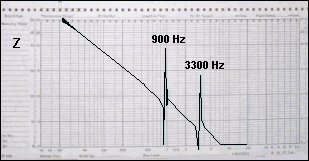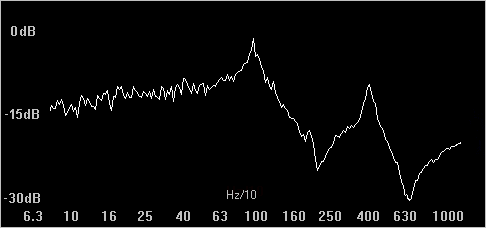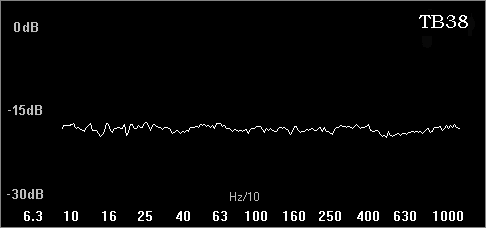|
Electrify the bowed string
Pickup designed to work with the load produced by the tension of the strings on the bridge of the musical instrument: violin, viola, cello,
double bass, sitar, guembri, portuguese guitar, etc. Under these conditions, the pickup remains firmly positioned under its left leg without the
need to make any adjustments to the bridge. Therefore, it is not necessary to use any type of adhesive for the sensor.



Violin and viola pickup
The TB38/VSA pickup is one of the lightest and most discreet models on the market with excellent acoustic quality.
On the violin and others instruments we use RCA connectors due to their minimal weight and size compared to the typical guitar jack.
The truth is that a violin, in terms of weight and size, is not a guitar and, for this simple reason, requires additional elements
that are smaller and, above all, lighter to avoid any muffling of the sound.
TB38/VSA. (Violin)
One sensor.
Surface for supporting the left foot of the bridge: 12,5mm. x 5,5mm. aprox.
Electric impedance: 28K ohmios. (1Khz) approx.
cable pickup: Shielded cable length, including female RCA connector fixed on one side of the instrument: 15cm.(17cm. The viola).
Cable de conexión: 3m. shielded with RCA and 1/4" JACK.
|
Why didn't we use a 1/4" (6.3mm) jack on the violin?
First of all, it is a question of aesthetics. In this case, an instrument as beautiful as the violin does not deserve
a support for a 1/4" jack, which would take up a good part of its surface. If we add the bulky
male jack, the grace and delicacy of this instrument will be diminished.
Remember that a classical violin is not comparable, in terms of weight and dimensions, to an electric guitar.
There is also the issue of weight. Many violinists do not want to place any object on the surface of the violin,
mainly because of the added weight, in this case the stand and female connector plus the corresponding male jack.
In short, ask a violinist's shoulder if playing for a while is the same as giving a concert of an hour or more,
where the added weight will start to be noticed.
Another problem is related to the safety and integrity of the instrument. It would not be the first time
that the violin-amplifier connection cable receives a strong pull due to someone tripping over the cable,
with the aggravating factor that, in this situation, the force of the impulse will end up on the violin with the corresponding
consequences...
In this regard, we must say that the female connector + male jack connection is more rigid than what is needed for an
acoustic instrument as delicate as the violin.
The RCA connectorc
There are several reasons for using an RCA connection between the pickup and the output cable. Firstly,
its very small size makes it possible to install it in some discreet place, thus, the elegance of the classical
violin will be maintained.
The problems related to weight, seen above, disappear since an RCA type connector
is an extremely light electrical device as well as robust and highly reliable. This is the reason for its constant
presence in the electronic market for many years.
Despite its apparent delicacy, the RCA connection offers sufficient resistance to pulling. Of course, if a strong pull were to occur, as in the previous case, the connection cable would come loose from the female connector, thus safeguarding the integrity of the instrument.
In short, by using an RCA we lose weight and gain in aesthetics and safety. We repeat, an acoustic violin, for obvious reasons, cannot be treated like an electric guitar.
It is obvious that the connection cable will always end with a 1/4" jack to obtain full compatibility with amplifiers and mixing consoles.
|
|
Cello and double bass pickup
The pickup is placed under the left bridge leg, facing the instrument, and is held firmly in place by the tension produced by the strings.
The output connector is attached to the sensor itself, which makes installation easier.
TB38/CH (Cello)
Surface for supporting the left foot of the bridge: 24 a 27mm. x 12mm.
Electric impedance: 24K ohmios approx. (1Khz).
Cable pickup: RCA attached connector plus 3m shielded cable with 1/4" jack.
Finish: metal body covered with artificial leather.
|
TB38/CB: (Double bass)
Surface for supporting the left foot of the bridge: 46mm. x 24mm.
Electric impedance 8K ohmios aprox. (1Khz).
Cable pickup: conector adosado RCA más cable blindado 3m. con jack 1/4".
Finish: metal body covered with artificial leather.
| Contents of the TB38 series kits |
- Pickup with attached RCA connector (cello and double bass) or standard cable output (violin and viola).
- 3m shielded extension cable with RCA connector and standard 1/4" JACK.
- Data sheet.
|
|
Installing the pickups
As is usual with all pickups on the market, these must be installed in the instrument as they are delivered from the factory, without
manipulating them at all to shape or bend them, since, otherwise, it is very possible that we will drastically reduce the sensitivity
or even stop working. They are quality pickups designed to be installed in the instrument permanently or for long periods of use.
If we play acoustic, the sound quality will not be diminished by the presence of the pickup.
The operations to be carried out by the musician are basically:
- Loosen the strings.
- Lift your left foot off the bridge (looking at the instrument from the front) to position the pickup membrane just below.
- Re-tighten the strings.
To kow more....
|
Mechanical correction of frequency response
In our designs, the basis of transduction is barium titanate. The graphs presented below show that, on a medium-sized ceramic substrate,
 apart from small, rather weak resonances in the upper part of the audio spectrum, easy to correct, there also appear one or two strong
resonances and their corresponding anti-resonances with a high Q factor in the mid-frequency area.
In the attached impedance graph you can see these resonances and anti-resonances reflected in the electrical part of a typical ceramic
vibrating in the air without support or mechanical damping.
apart from small, rather weak resonances in the upper part of the audio spectrum, easy to correct, there also appear one or two strong
resonances and their corresponding anti-resonances with a high Q factor in the mid-frequency area.
In the attached impedance graph you can see these resonances and anti-resonances reflected in the electrical part of a typical ceramic
vibrating in the air without support or mechanical damping.
These resonances also appear in the response curve, somewhat displaced according to the type of support used to obtain the graph
making it impossible to use them in the musical field, as we can see in the following response curve. |

¡Frequency response not suitable for music!
To make this first measurement, we have not applied any damping or correction technique.
The curves were made with a spectrum analyzer and logarithmic sweep adjusting its bandwidth from 50Hz to 15KHz.
By making a design with the appropriate measurements and choosing the appropriate materials, both for the active element and also for the substrate, in addition to using an appropriate damping system, we can move and/or attenuate the resonances to achieve an excellent frequency response. The following graph shows the response curve of our pickup, once it is
mounted in its housing and its own resonances corrected. It is a curve that is completely suitable for use for professional musical purposes. |

¡Admissible frequency response for Music!
|

|


